The love affair began in a strange way—I got blown off the table.
I first played the game Orléans at a bar in the Logan Square area of Chicago six or seven years ago. The guy who brought the game that night had clearly played a few times. I had not.
If you look at the box, the board, the resources, and the somewhat chintzy felt bags in Orléans, your hopes remain measured. It’s not a fancy production like many of today’s games tend to be. But I definitely come from the school of “I’ll play anything once” so we went through the teach, then an overview of what each section of the board covers, and I started to understand what the game was about. Game on.
Orléans is played over 18 rounds, with seven phases in each round. When my friend laid out the timeline, it sounded like this would be an epic affair. (Or maybe that was the second beer talking; it’s hard to say.) But the game is not long, not by a long shot. Your goal over those 18 rounds is to score the most points, and you do that by drawing a certain number of “followers” from your felt bag and placing them on your player board to either activate the hiring of more followers, the movement of your merchant token around the board to gather goods and build trading stations, or other actions which are listed on “Place” tiles. Each of these actions requires a specific number and type of followers to activate, so having the right mix of followers to do things is key to a successful strategy.
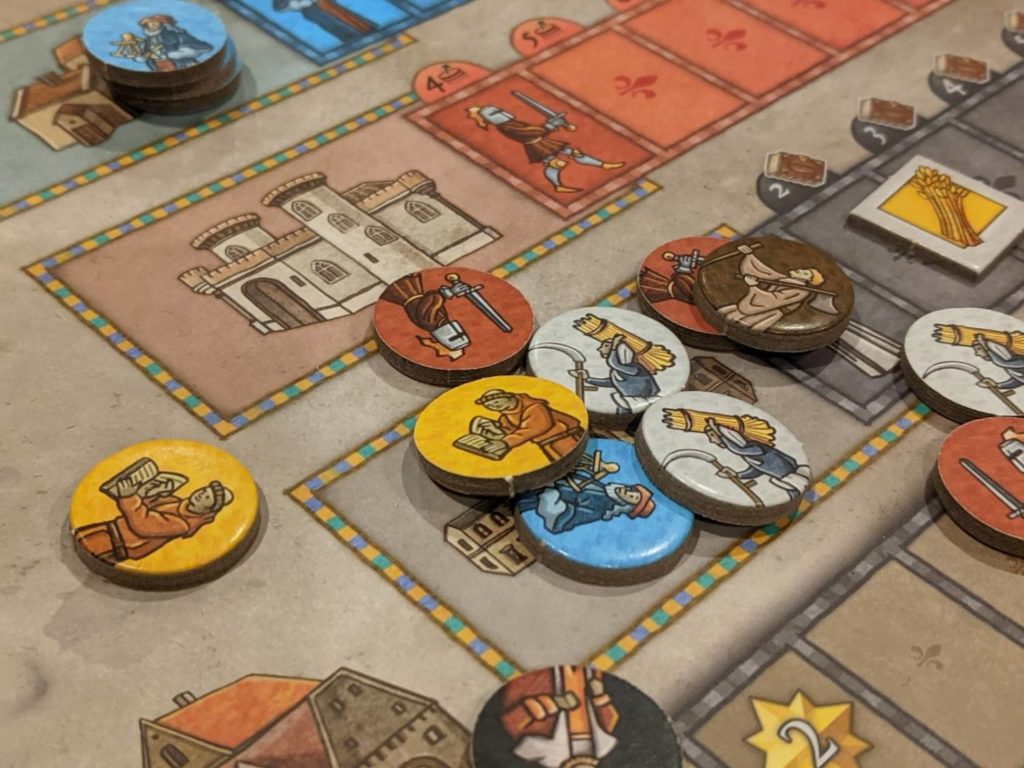
Your Deeds Are Surprisingly Beneficial
Each round, a random event (there are six different types of events, with three of each in the 18-round deck of event tiles) changes something about the game’s rules for that round only, so you have something else to contend with besides your opponents. At the end of each round, the first player marker passes clockwise and a new round begins.
Game-end scoring comes from resources picked up throughout the game, leftover coins, and a formula that takes into account your trading stations and Citizen tiles, multiplied by your position on the development track. Citizen tiles are earned by reaching certain places on the main board or the game’s Beneficial Deeds board, a location where you can send followers permanently out of your bag to earn coins and/or steps on the development track.
Those 18 rounds absolutely flew by during my first playthrough. For those first 2-3 rounds, I maybe took one action each round. But then as my bag began to fill with followers, multiple options began to open up. Do I start walking my Merchant all over the French countryside, gathering goods? Do I hire boatmen to fill my pockets with cash and race my competitors to grab one off the Citizen tiles? Maybe I’ll play the farmer game, gathering goods while getting ahead of my peers on the Census track to grab an extra coin each round? When do I go for more knights, so that I can draw more followers each turn?
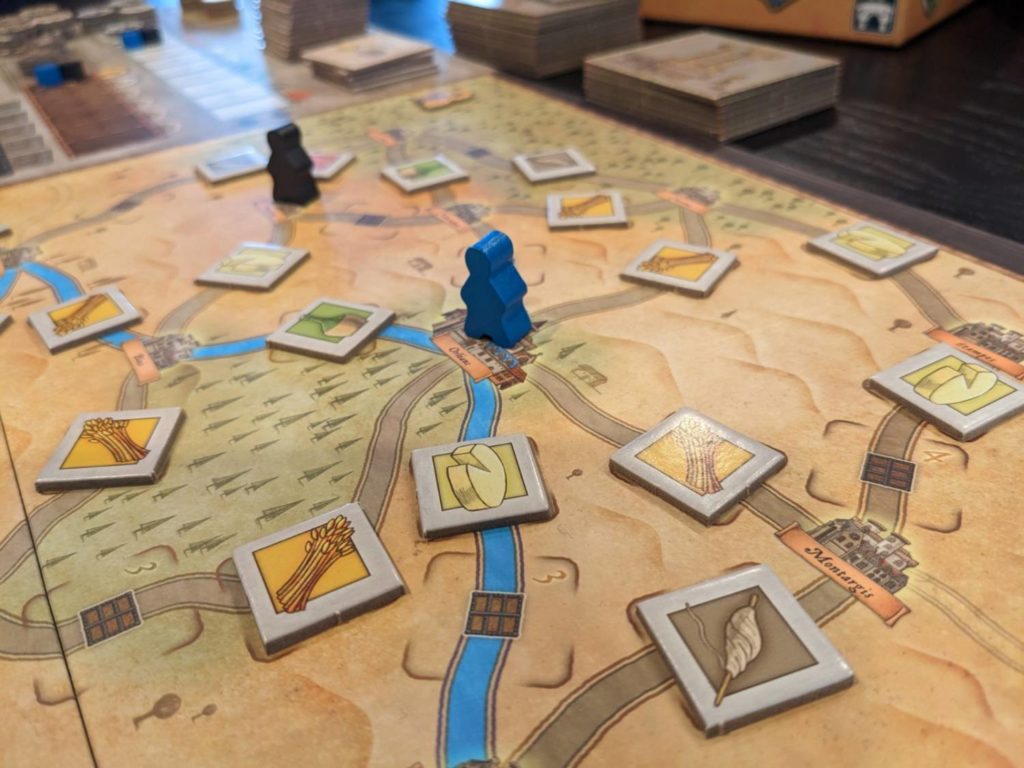
And what about monks? I like the idea of followers who can be used anywhere, and monks provide flexibility when I need it most (assuming I can draw them from my bag).
Plus, this was all before considering what might happen if I sacrifice followers to the Beneficial Deeds board. When should I start that process? Should I even bother?
Even on that first play, I was just loving all of the things open to me. And in a three-player game, everything really IS open to you, to a certain extent. When I play a new game, I just commit to a strategy early on and explore that avenue to see how a game plays.
Which led to me losing by, I think, 60 points. Legitimately blown off the table. Usually when that happens in other games, I complain loudly that “this thing is crazy unbalanced” or “the starting player powers are OP” or “this %$@*^ point salad doesn’t make any sense” or “the event cards are too swingy” or “everything about this adventure is a hot pile of [insert creative profanity here].”
But none of that happened. If I’m not mistaken, my exact words at the end of play were:
“I loved that game.”
No, I didn’t love the stunning artwork—I wouldn’t say Orléans has that—nor the rich theme. At no point did I consider myself a person building a real community, rich in cheese and silk, making life better for my citizens. (Ahh, apologies, it’s not silk…it’s “brocade.” Yep, sounds a lot more luxurious.)
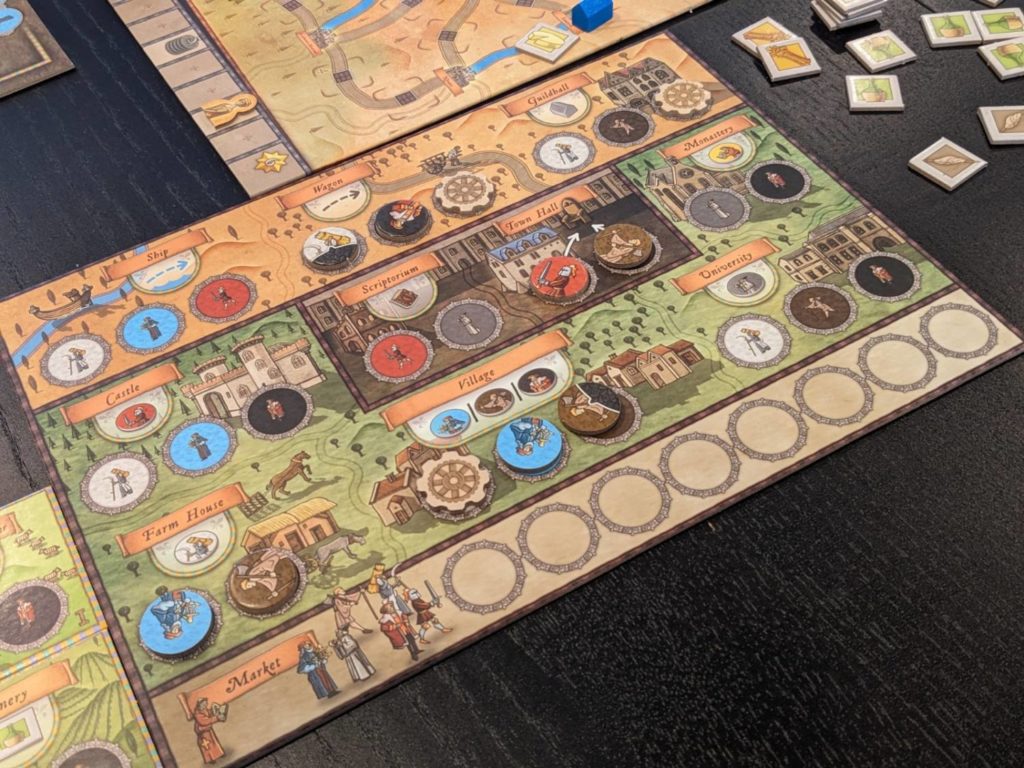
The Play of It
I absolutely adored taking turns in this game. The decision space was magic for me—lots going on, but my options in each turn are limited by the bag draw. I can build a strategy while watching what others are doing, and there’s a level of interaction that is interesting without being stabby. You get to watch your engine hum just a little before the game ends in that 18th round.
And those turns are quick. REAL quick. I own Orléans and all of the expansions now (thanks to an incredible Black Friday deal on CoolStuffInc back in 2020; thanks, COVID!!), and I’ve played full games of Orléans with three players in one hour. And that hour was rich with interesting decisions as I had to pivot from one strategy to another, all while hoping that I would draw exactly that one craftsman, or monk, or knight that I needed in the moment to maximize my next turn.
Once you begin to figure out what strategy will fit for the game state in your current match, using different Place tiles to match with your bag’s followers becomes a ton of fun. And all of the Place tiles are viable. Sure, Place tiles that make certain followers act as wilds make things easier (and yes, a couple appear to be a little broken; a variant allows players to draft those Places out of the game). But in all of my tries, I have found Place tiles that lean into a certain strategy based on the majority of the followers in my bag.
I recently got Orléans to the table a couple times to prepare for the new “draw & write” version of the game, Joan of Arc: Orléans Draw & Write. I still love Orléans for its utter simplicity; teaching Orléans to non-hobbyists is a straightforward affair.
A new wrinkle surfaced during a two-player game I recently completed: I won a game by trying to only hoover goods tiles off of the map while leaning hard into a farmer recruiting strategy. That, combined with a couple of Place tiles that manufacture the most valuable goods and hiring boatmen to gather lots of coins, scored me a decent amount of points as I tried something new.
Generally, I had only seen games of Orléans won with a mix of focus on the development track combined with placing trading houses and winning Citizen tokens while doing a little bit of everything else. This gave me the sense that maybe there really are different ways to win this game.
Even if I hadn’t tried that, I still love Orléans, and I still haven’t really bothered with the expansions. For a game that still resides in the top 40 games on BGG, that’s a great testament to its staying power. If you are looking for a mid-weight Euro design that holds up nine years after its release, give Orléans a look. (And if you are like me and already have Orléans on your shelf, dust that puppy off and get it to the table!)


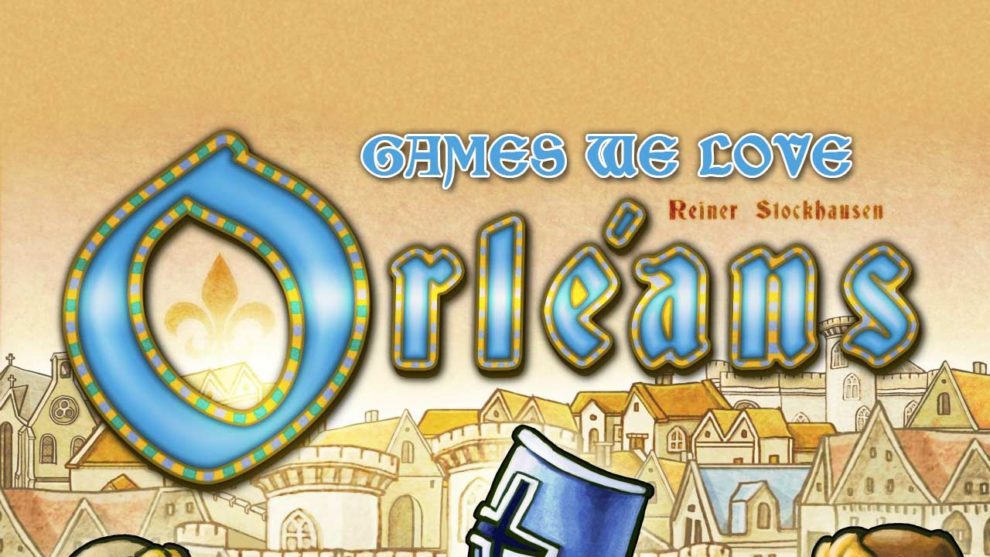
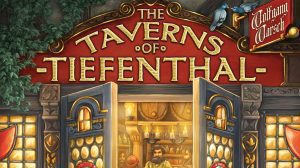

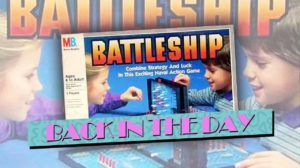





Add Comment